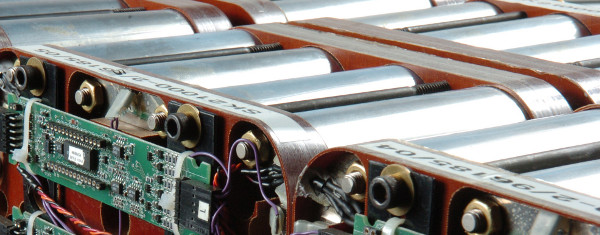Building a Better Battery

Lithium Ion Batteries
Image credits: Argonne National Laboratory via Flickr
Image rights: https://creativecommons.org/licenses/by-sa/2.0/
Consumer technology has come a long way over the last two decades: computers are cheaper, phones smarter, music more portable - and yet batteries in electronic devices still leave much to be desired. The commonly used lithium-ion batteries degrade over time to the point where your laptop can barely make it across the room before the low battery indicator starts blinking. These bad batteries are creating waste and stifling innovation.
Lithium-ion batteries generate electricity when tiny charged lithium atoms move from a negatively charged electrode to a positively charged one. As the battery charges, the lithium atoms move in the opposite direction. The problem is that with each cycle of charging and discharging, the battery’s electrodes degrade and the battery’s capacity drops. To fix this dying battery dilemma, scientists need to see what’s happening inside the battery in realtime at a resolution of one billionth of a meter -- something that hasn’t been possible until just recently.
Researchers at Brookhaven National Laboratory came up with an innovative method of peeking at the processes inside lithium-ion batteries. The researchers shot a beam of electrons into a battery and studied how they were deflected by the molecules inside. Using the collected data, the researchers were able to watch the battery’s chemical reactions as they happened. Future studies will use this method to gain insight into what can be done to prevent electrode decay and build better batteries. So the next time you complain about your phone’s battery dying faster than it used to, know that help is on the way.
Thomas Sumner is a science writer based in Santa Cruz, Calif.
